Scene
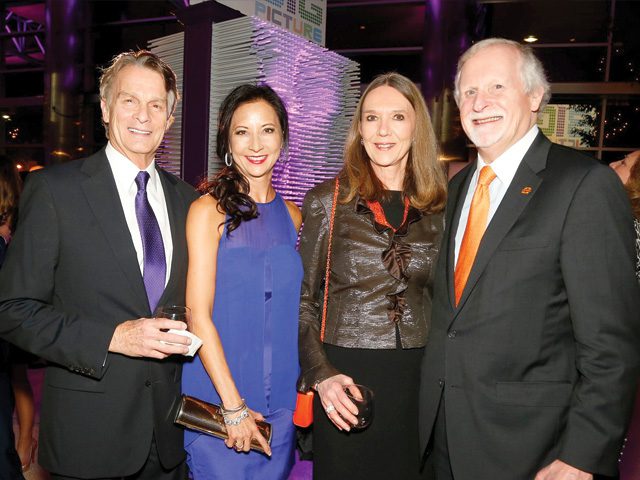
The Guitar Guy
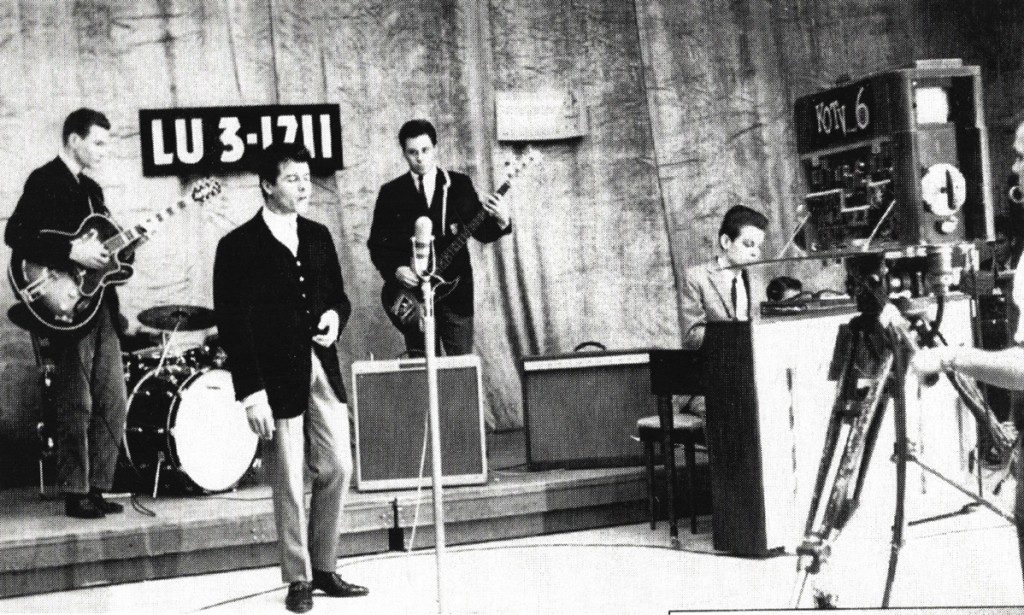

Images courtesy John Wooley.
One of the things I’ve learned in my decades of writing about Oklahoma’s great rock ‘n’ roll-era musicians is that they are, with a couple of exceptions, not at all interested in hyping themselves or their achievements, even when those achievements are hall-of-fame caliber.
Take Tommy Crook for instance: Known among his peers to be one of the greatest guitarists the state has ever produced, right up there with the likes of Barney Kessel, Charlie Christian, Eldon Shamblin and Jesse Ed Davis. One of Crook’s early influences, Chet Atkins, said as much one evening on The Tonight Show with Johnny Carson, after having been exposed to Crook’s solo-guitar wizardry during a stopover at Tulsa International Airport. (Crook, at the time, had a longstanding gig at the Inkwell Club in the nearby Sheraton hotel.)[pullquote]“It all started at a Saturday morning talent contest,”[/pullquote]
Even though many musicians would wear that nationally televised endorsement like a badge, Crook doesn’t even like for people to bring it up.
“No,” he says. “That wore me out years ago.”
However, as is the case with many of his old comrades who came out of the Tulsa clubs in the ‘50s to craft what’s become known as the classic Tulsa Sound, Crook does enjoy talking about a few of the more memorable things he’s experienced in his musical life. For him, that stretches all the way back to the early years of the Eisenhower administration.
“It all started at a Saturday morning talent contest,” he recalls. “All these little movie theaters around town, especially the neighborhood theaters, would have live stuff on the stage on Saturday mornings – yo-yo contests, things like that. The Rialto, downtown on Third Street, had a talent contest, and the first prize was $10. Well, in 1953, 1954, $10 was about how much my dad brought home from work every day, after taxes.
“So we went down there. Back in those days, kids tap-danced a lot. Kids played accordion. So there were a lot of accordion players and tap dancers, and one kid by the name of Don Willis. He and I were the same age. His folks had one of the first restaurants on 11th Street, out by Wilson Junior High School, called the Chili Bowl. He was a handsome young man, and I remember he sang like an angel, with his mother accompanying him on piano. I remember what he sang, too, because I had just seen the movie, Calamity Jane. It was ‘Secret Love,’ from that movie. I’m getting chills right now just remembering it.”
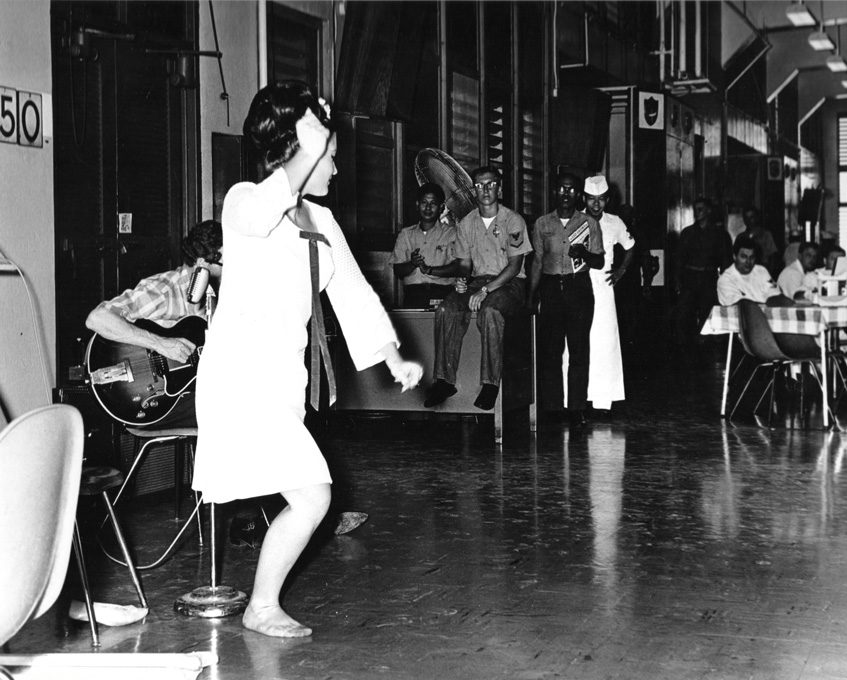 As good as young Willis was, however, a cowboy-garbed Crook got the most applause from the audience, winning the top prize for his singing and guitar playing.
As good as young Willis was, however, a cowboy-garbed Crook got the most applause from the audience, winning the top prize for his singing and guitar playing.
“I remember when it was all over, and I was so proud of myself, my dad said, ‘You ought to go give the money to the kid who sang that song,’” laughs Crook. “He really was an incredible singer.”
Crook, however, was the one who landed a regular gig at the Rialto, performing live every Saturday night.
“It was just a copy of the Grand Ole Opry,” explains Crook. “About an hour show, between a double feature. The first feature was, like, at seven, then our show, and then the second feature. All for 50 cents. There’d be a dozen of us on bales of hay taking our turns and doing stuff, and [producer] Art LaMan would always bring in a headliner. Porter Wagoner, who had a big tune out, ‘Satisfied Mind,’ was one of them. I can’t remember any of the others. A lot of them were tap dancers.”
He laughs again. “This one guy came in, and he was tap-dancing, and then he jumped up on this xylophone and started playing ‘Lady of Spain’ with his feet. It was like The Ed Sullivan Show.
“They had a standing deal down there at the Rialto,” he adds. “They would give $1,000 to any kid my age who could outplay me. And there wasn’t anybody, because I had been raised up around adults who played good, and I didn’t have to wait until I was 10 or 12 to play guitar. I had one when I was 4 years old. So I’d been after that thing all my life. All my heroes – Roy Rogers, Gene Autry, my dad – they all played guitar, and that was what I wanted to do.”
That’s what he did, too. And while he chose, for the most part, to stay close to home to play his trade, Crook did participate in some USO tours during the Vietnam era – including one with a young woman the Stillwater News-Press dubbed, in a 1967 feature story, “Oklahoma’s one-legged dynamo of energy.”
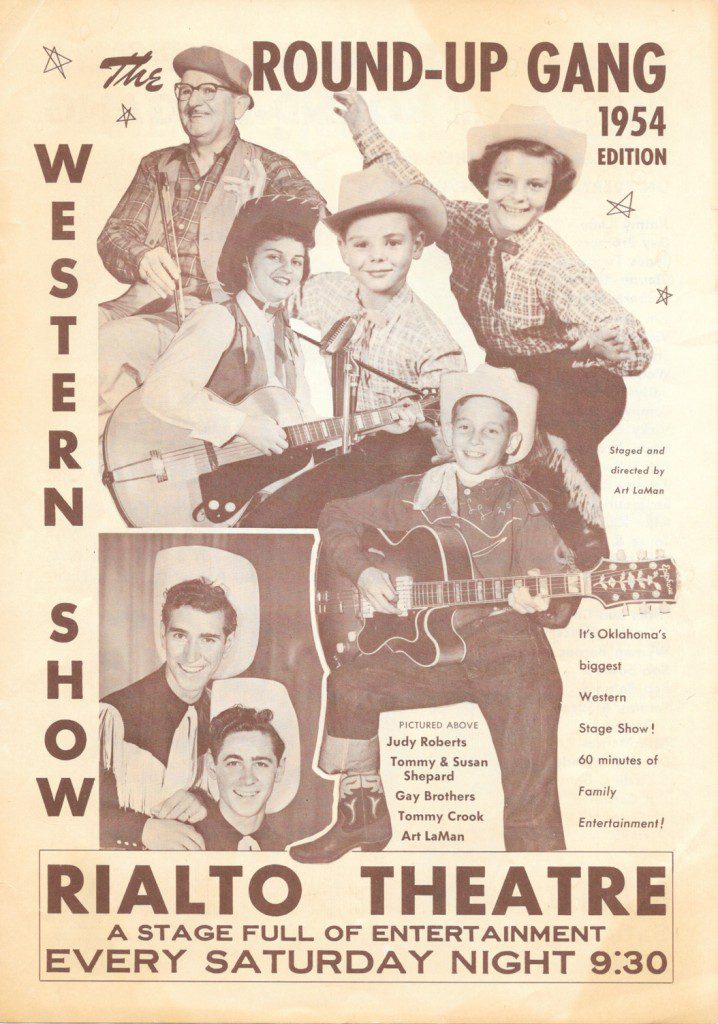
“Roberta Scott had graduated from [Tulsa’s] Will Rogers High School in 1958, the same year as David Gates and Anita Bryant,” Crook says. “She was a Miss Tulsa. Later on, she was involved in an automobile accident, nothing too serious. But when they were X-raying her, making sure there were no broken bones or anything, they found cancer in her leg and had to amputate it at her hip.
“She contacted me in the first part of 1967. She’d gotten herself an agent, and they had convinced the USO people it would be a real good thing for her to go over there to Southeast Asia, where all those hospitals were, and show the troops there could be life after losing a limb, that kind of deal. We went to Japan, Okinawa, the Philippines, Guam, Hawaii – I think we were gone six weeks, entertaining those people. At that particular time, the frug was a real popular dance, and that was her specialty.
“Traveling overseas with a one-legged dancer,” Crook muses. “How can you top that?”
Although his playing has taken him across the world, one of the places he didn’t go was southern California, which set him apart from many of his fellow Tulsa rock ‘n’ rollers in the late ‘50s and early ‘60s. That’s when the exodus West began, with the likes of Leon Russell, David Gates and Jumpin’ Jack Dunham blazing the trail for their fellow musicians back home.
In Tulsa, Crook had been in David Gates and the Accents, a popular band that included Jim Karstein on drums and Carl Radle on bass. Both of them, like Gates, would find plenty of musical work in L.A. But, according to Crook, a dispute over how much Gates was paying the rest of the musicians led to Crook’s leaving the group. It happened in an Oklahoma City motel room, as they were getting ready to play a fraternity job at the University of Oklahoma.
“I went through his wallet and found the check they’d given him [for the job],” remembers Crook. “I got it out and left it lying, open, on the bed. He came out of the shower, brushing his hair with his hairbrush, and when he saw that check, he knew it was me who’d exposed him. So we started wrestling around, and he broke the handle off his hairbrush and went back in the bathroom.”
Although they played the gig together, Crook says, they didn’t talk again for decades, until Gates returned to town in 2002 to perform at Utica Square’s 50th anniversary celebration and came out to see Crook at a local venue.
Crook insists he was planning to go West with the others before that altercation, but adds that staying around town may have been a blessing.
“As it turns out, everybody was gone to California except me, so I had my pick of all the girls and all the clubs,” he says with another laugh. “I was the big fish in the pond.”
Four-star Achievement
A local nonprofit dedicated to helping Oklahoma students learn about the business world through hands-on learning experiences has been recognized with a national award.
Junior Achievement of Oklahoma was recently awarded the organization’s Four Star Award, which recognizes the staffs and boards across the country that meet Junior Achievement’s standards in operations and strong representation of the organization’s mission.
“We are thrilled to receive the Four Star Award,” Shannan Beeler, president of Junior Achievement of Oklahoma, said recently. “We thank our more than 4,000 classroom volunteers and corporate partners who joined with our board of directors and staff to empower thousands of young people to own their economic success, plan for their future, and make smart academic and economic choices.”
Junior Achievement brings business education – everything from economics to financial literacy – to students in grades kindergarten through 12th.
Toasting Oklahoma
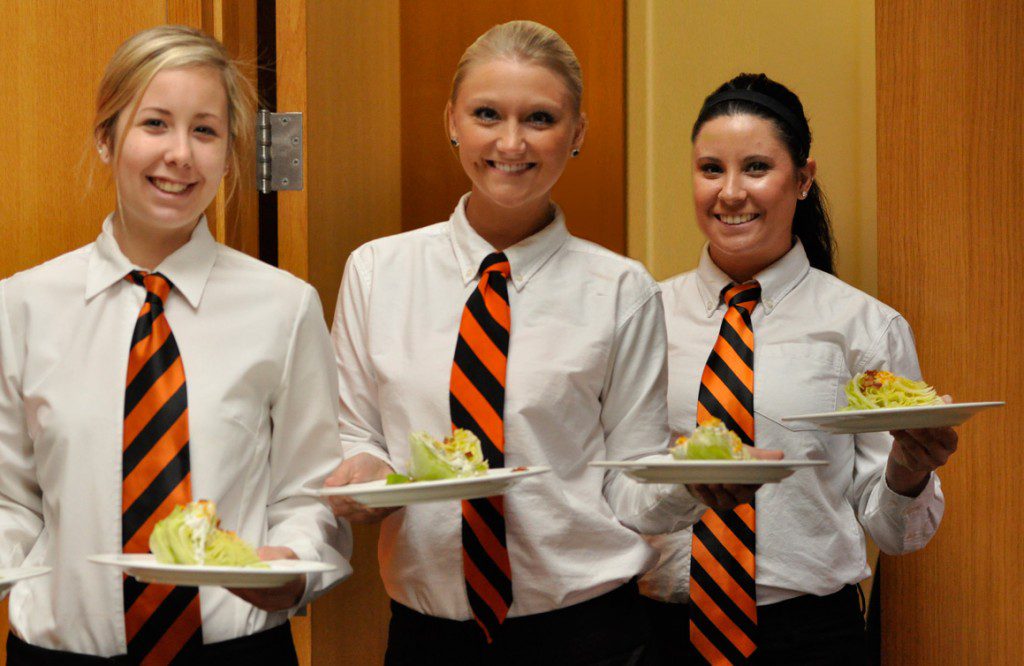

Photo courtesy OSU.
Save the date and mark the calendar for one of the best wine and food events in the area.
The biennial Wine Forum of Oklahoma 2015 is scheduled for April 10-11, at the Oklahoma State University campus in Stillwater.
This forum is two days of innovative, educational wine seminars, extraordinary wine tastings and exceptional food, says Lyn Putnam, the manager of marketing and communication for the School of Hotel and Restaurant Administration at OSU.
More than 30 vintners will be on hand to share their world-class wines, and culinary creations from 16 of Oklahoma’s top chefs will be available. The event is also a chance to recognize Oklahoma-connected wine producers and purveyors.
This year, Girouard Vines, a family-owned urban winery located in downtown Tulsa, will be featured. George Girouard began the task of growing wine grapes in Oklahoma more than 50 years ago, says Putnam. He worked tirelessly to cross-pollinate traditional wine-grape vines with indigenous grapevine species. His son, Chris, is now growing those grapes in a small vineyard in south Tulsa and in California.
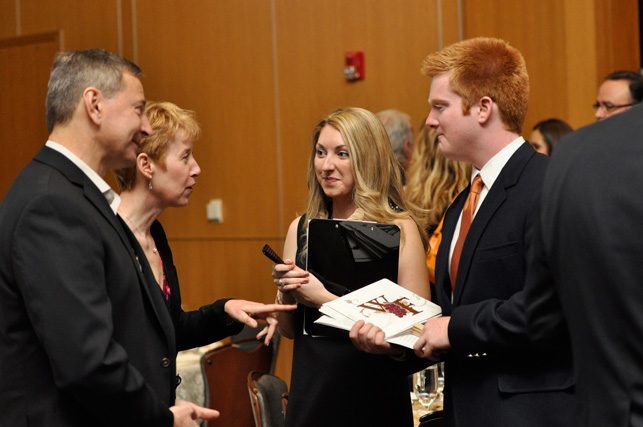
“We will also have a seminar of Oklahoma wines and Made in Oklahoma food products,” says Putnam.
Food and wine pairings, a gala dinner, auctions, as well as educational seminars are all part of the fun, she says.
“This year, there are 13 educational wine seminars focused on an array of topics, including worldwide whites, bold reds and everything in between,” says Putnam.
There will also be ample opportunities to learn about viticulture – the science, production and study of grapes – plus the art of making wine.
“Understanding viticulture helps one determine his or her preference with wines,” says Putnam.
Funds raised through the forum’s events provide student scholarships and funding for professional development.
The Wine Forum began in 2009 as the idea of Marilynn and Carl Thoma, dedicated OSU alumni and owners of Van Duzer Vineyards. The event provides students the opportunity to plan, implement and manage a major event as part of the School of Hotel and Restaurant Administration curriculum. The program has now grown to more than 150 students in multiple majors. For a full schedule of events and admission prices, visit www.wineforumofoklahoma.com.
Osiyo
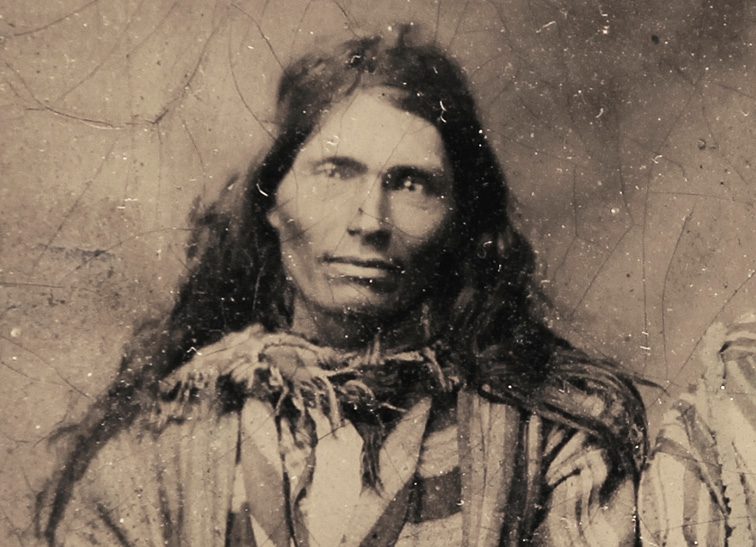
Photo courtesy Osiyo.
It’s the Cherokee word for “hello,” and now, it’s also the title of a television show.
Osiyo, Voices of the Cherokee People is a monthly, 30-minute, magazine-style television show that tells the stories of the Cherokee Nation and its people, culture and heritage. Longtime news anchor Jennifer Loren, formerly of KOTV 6, hosts the show.
“Our people have been asking for this kind of storytelling for so long,” Cherokee Nation Principal Chief Bill John Baker said in a statement about the show’s premiere. “I often hear people say, ‘We have a great story to tell. Our people are doing great things. Why aren’t there more stories about what we’re doing?’ This program is the answer to that question. We’re so proud to share with the world stories about our culture and about Cherokees who are excelling and bettering their communities.”
The show is produced by Cherokee photographer and filmmaker Jeremy Charles and Muscogee Creek filmmaker Sterlin Harjo. For showtimes in your area, visit www.osiyo.tv.
Tracing Roots
Today, social media dominates the landscape of human connection. People take to Facebook, Twitter and other platforms to get updates on their growing family trees. Everyone’s life events and daily moments are chronicled on the Web, allowing current and future generations to easily stay connected to loved ones. Feeding the same desire for information, it is becoming increasingly common for people to use the Web to connect to a more unexpected familial group: their ancestors.
“I think there is a hunger in our country for our past, before it is lost forever,” says genealogist Michael McCoy. “We want to know our true origins. It’s no longer a matter that we are all Americans – it’s now a matter of regaining our original heritage that brought us to America in the first place.”
![tree-shutterstock_257176768-[Converted]](https://b1523572.smushcdn.com/1523572/wp-content/uploads/2015/03/tree-shutterstock_257176768-Converted.jpg?lossy=1&strip=0&webp=1)
Ancestry.com is perhaps the most well-known genealogy website, but the monthly membership fees may be a deterrent for some. McCoy suggests checking out free sites, including familysearch.org, genealogycenter.org and heritagequestonline.com.
“Most of the information that will come to you will be public information, already available as a public record,” he says. “Slowly, you can proceed backwards in time.”
McCoy also suggests joining a genealogical society and subscribing to genealogy magazines to learn more about how to trace one’s lineage. These resources can provide valuable tips when digging through the archives becomes troublesome. McCoy says poor record keeping, secretive relatives, pandemics and closed adoption records can all contribute to a difficult search. There is also a chance the records have been destroyed, as was the case in 1921 when much of the 1890 federal census burned in a fire.
“You will run into gaps in information, where you will be stymied with either too much information – such as too many Smiths – or too little information,” explains McCoy. “So you must be willing to be patient, a good sleuth and ask for help when necessary.”
McCoy says to approach the search with an open mind. As the secrets of the past get unveiled, surprising and even upsetting information could surface.
“Family history is full of stories, twists and turns,” he says. “Such things as natural disasters, murders, multiple marriages, illegitimate children, land grants, court records, wills, probate records, et cetera, are all parts and parcels of family history that become buried with time.”
The unanticipated information, though, may be what helps people get a clear picture of how they came to be.
“Gaining knowledge about our familial past helps us to understand our way of thinking and even helps us to understand others who may have opposing views,” he says.
Budding Business
Artisan shops are popping up everywhere, online and in traditional brick and mortar businesses, catering to eager customers looking for products that offer a bit more. Buzzwords like “organic,” “local” and “handcrafted” have moved to the top of consumer wish lists. A budding business called The Little Bubble is right on trend, marketing handmade soaps, scrubs and bath treats using locally sourced, organic and sustainable ingredients.[pullquote]“Our motto is you don’t have to be big to make a big impact. She is a regular girl that has decided to tackle something big,”[/pullquote]
At the helm of The Little Bubble is owner Bella Corrente, an imaginative 10-year-old who began the business more than two years ago.
A self-described typical pre-teen, Bella has always been very creative and playful, says mother Tawnya Corrente. Channeling that creativity and enthusiasm into a pint-size entrepreneur was an easy transition.
“Bella had fallen in love with some lip gloss we found,” recalls Corrente. “It was all natural and organic. I loved that she took notice to the fact that it was good for her and the environment, that it had a good story with it.”
But, then, there was a problem. Bella ran out of her new favorite lip balm.
“We weren’t able to find it anywhere,” explains Corrente. “Being the littlest in a family of makers, Bella researched how to make it.”
Homeschooled at the time, Bella’s mom got the idea to use the project as a way to learn fractions.
“As she began to learn fractions, I came up with the idea to bake, but she didn’t want to,” says Corrente. “She wanted to make lip balm. I took it a bit further and decided to bring science into it and make soap.”
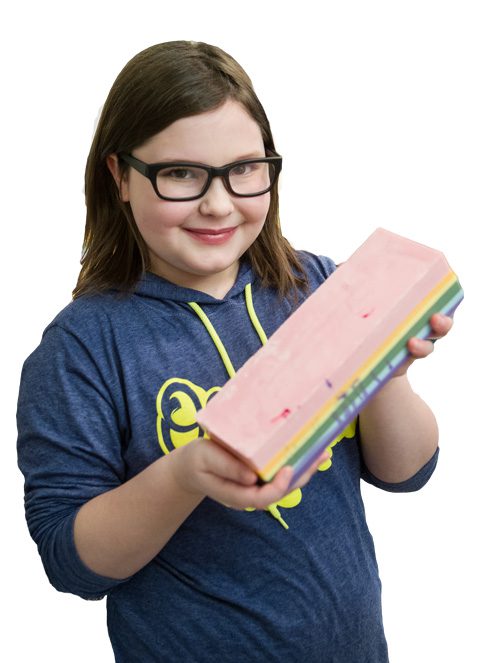
Bella used her first products as Christmas gifts; they were huge hits.
“Then, people asked if we had more,” says Corrente.
As demand continued to grow, a family friend connected Bella to a local kid’s event, Wiggle Out Loud.
“Bella made 80 bars to sell at a table at Wiggle Out Loud,” explains Corrente. “She sold all but a dozen bars.”
They totaled the profits, and Bella was hooked. As any wise investor would do, she bought more supplies.
With a working business model, Bella expanded to Etsy, an online marketplace where people around the world connect to make, sell and buy unique goods.
“We set up an Etsy account so she could use her writing skills and learn about starting a business,” says Corrente. “What started out as a lesson on fractions has become so much more.”
Her staff has grown, as well. The whole family helps Bella, even her three older brothers.
From the beginning, Bella decided that 10 percent of her profits would go to charity. She has donated to Pets and People, an animal rescue; Positive Tomorrows, a school for homeless kids; and the Oklahoma Humane Society.
“Our motto is you don’t have to be big to make a big impact. She is a regular girl that has decided to tackle something big,” says Corrente.
The Little Bubble offers an ever-growing lineup of products: soap by the bar, body polishes and scrubs, lip polish and gloss, bubble bath and a men’s line.
“Bella is always researching new recipes and ingredients,” shares Corrente. “We shop our local farmers market for local, seasonal ingredients. We use goat milk from a family friend when we can get it. Our oils are all organic, sustainable and phthalate free.”
The Survivor’s Tale
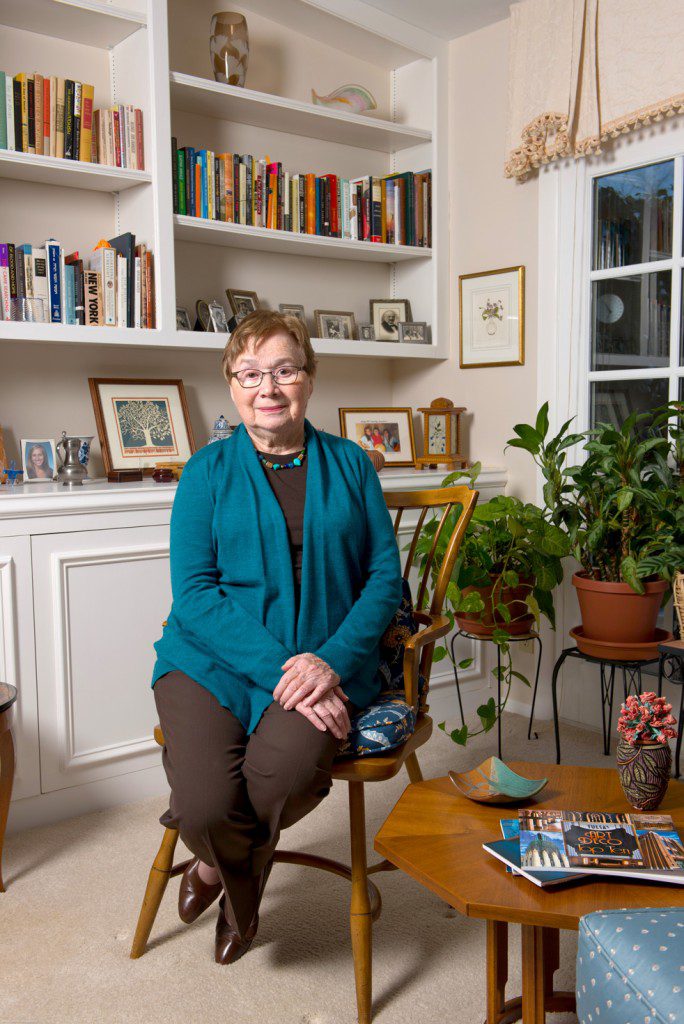

Eva Unterman’s childhood in Lodz, Poland, before World War II was what some would call idyllic. The only child of a middle-class Jewish businessman and a housewife, Unterman enjoyed a large extended family, summers in the countryside and was looking forward to beginning school. But in the winter of 1940, her childhood was shattered.
Unterman was only 6 years old when she and her family were ordered to assemble with only what they could carry – Unterman took one of her dolls – and march miles to the Lodz ghetto. She never saw her home again.
“Life in the ghetto was terrible,” Unterman recalls. “Hunger, disease and fear of deportation were constant. People were afraid we would be sent to Chelmno because it was nearby. We never heard the word Auschwitz.”
Yet, that very word, a name that has since become a symbol of the most appalling atrocities of the Nazi regime, was shortly to become a horrifying reality for Unterman and her family. Now, as the world approaches the 70th anniversary of the liberation of Auschwitz, Unterman recalls how after four years of desperation and disease in the Lodz ghetto, she, along with her father, mother and grandmother, were forced to make the now-infamous journey to Auschwitz-Birkenau that many never survived.
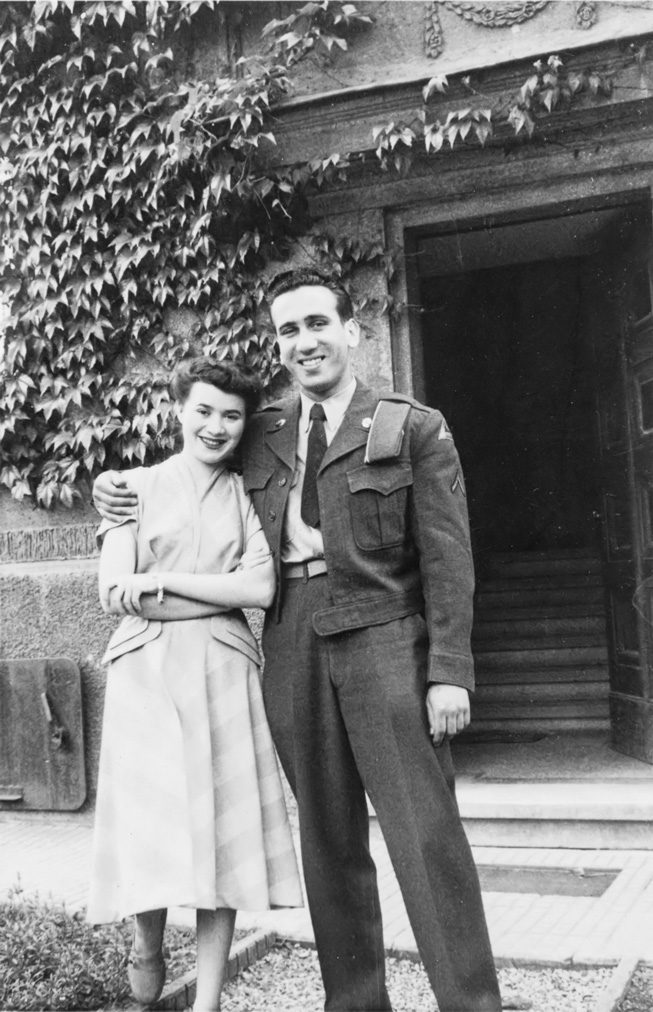
Photo courtesy Eva Unterman.
“We were told to assemble at the train station,” Unterman says. “My father lifted me up into the cattle car. We were crammed into the car for several days. We didn’t know where we were going, and there was no food or water.”
Unterman remembers the men and women of her family being torn apart before their clothing was confiscated, their heads shaved and they were forced into the showers. Unlike many who entered the camp and those notorious showers, Unterman and her family lived to leave again. Unfortunately for them, their nightmare had only just begun. After a few dark days in Auschwitz, Unterman and her female family members (and later, she learned, her father) were transported to Stuthoff concentration camp, where her grandmother was eventually murdered.
“Stuthoff was the worst experience,” Unterman recalls. “I was very sick, and conditions were extremely harsh.”
Although Unterman and her surviving family members were united safely in 1945 – despite a forced, deadly march to Terezin – her story did not end with the liberation of the Nazi camps.
Since 1961, when she moved to Oklahoma with her husband, Unterman has called Tulsa home and has gone on to share her tale of hope and survival with the next generation of Tulsans.
“I never spoke about my experience during the Shoah (the Hebrew word for Holocaust) until a teacher asked me to come speak to his students,” she says. “Then I realized I have a moral obligation to speak for those that did not survive, to tell their story. I began to speak more often and realized that if you tell one person, it ends with them, but if you tell a teacher, it reaches hundreds of young people, who will hopefully carry the story with them into the future. There are many people in our community who also saw the need for Holocaust education and commemoration. With their help, I set up the Council for Holocaust Education.”
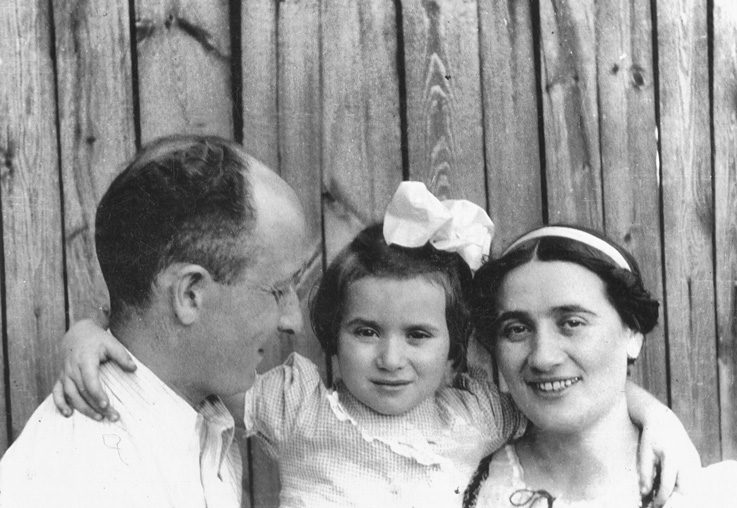
This month, Unterman will once more share her story as she addresses the topic “The Last Transport: My Childhood During the Holocaust” for the Tulsa Council for Holocaust Education’s 18th Annual Yom HaShoah/Interfaith Holocaust Commemoration. The commemoration is sponsored by the council, a committee comprised of the Jewish Federation of Tulsa and the Tulsa City-County Library, as well as numerous interfaith organizations. After the event, Unterman will sign copies of her memoir, Through Eva’s Eyes. The book is written and illustrated by her granddaughter, Phoebe Eloise Unterman.
In addition to Unterman’s talk and book signing, the commemoration program includes an exhibit of projects created by Tulsa-area students. There will also be a musical performance and a candlelight vigil in memory of the Jewish children of Lodz who were killed during the Holocaust. Staff from the Tulsa City-County Library will have available for checkout many Holocaust books and media.
For generations who did not experience the horrors of the Holocaust first-hand, Unterman cautions, “In everyday life, we have choices about what we say and do. Our words can be weapons. Choose your words carefully. Respect one another. Learn about people who are different from you. You might find that you have more in common than you realize.”
Unterman will speak on April 16 at Congregation B’nai Emunah, 1719 S. Owasso, in Tulsa. The event is free and open to the public. Parking is limited at B’nai Emunah, but overflow parking will be available at Temple Israel, 2004 E. 22nd Place. A free shuttle service from Temple Israel to B’nai will begin at 6 p.m. and resume for an hour following the event.
Letter From The Editor

Where were you on April 19, 1995?
I was in the office of my junior high school. It was our second period, and I was an eighth-grade office assistant. I ran errands for the principal and secretary, delivering notes, relaying messages. Our school secretary, Martha Herman, received a call a little after 9 a.m. from a class that was on a field trip in downtown Oklahoma City. The teacher said that there had been an explosion downtown, but that he and the students were okay.
This was before the Internet was available on cell phones, before Facebook and Twitter, before email was widely used as a communication tool between friends and family. Not too many minutes later, word came via breaking news that the Alfred P. Murrah Federal Building in downtown Oklahoma City had been the target of a large bomb. There were 168 casualties. Hundreds were injured. Thousands’ lives were forever changed. The Oklahoma landscape was forever changed.
Later that month, the bus carrying my class on a school field trip to Oklahoma City drove by the bombing site. National news platforms were still set up. There was yellow police “caution” tape rimming hundreds of feet. And the makeshift memorial of notes, flowers and stuffed animals had taken over the chain-link fence that separated the crime scene from the public. It was surreal then, and 20 years later, visiting the Oklahoma City National Memorial & Museum, the events of April 19, 1995, are still surreal, as unbelievable as ever. The photos taken of the carnage and aftermath of the bombing are still difficult to view. It’s hard to believe that evil could strike our state in such a swift and powerful manner.
But good came from the bad. The Oklahoma Standard was born. The state’s reputation for standing behind its citizens in a time of tragedy was put on an international stage. It has been seen many times since in the aftermath of natural disaster and tragedy. Oklahomans stick together. Despite our differences, true Oklahomans take care of each other.
To celebrate this commitment to others, the Oklahoma City National Memorial & Museum has launched the Oklahoma Standard, an initiative to empower the state’s residents to commit one act of service, one act of honor and one act of kindness during the month of April.
Just like my parents will always recall where they were when JFK was assassinated, and my grandparents remembered the moment they found out that Pearl Harbor was attacked, I will always remember sitting in the office of Bristow Junior High and learning about an explosion in the state’s capital. On this 20th anniversary, remember the tragedy. Remember the lost lives. Remember the triumph over evil.
Remember.
Jami Mattox
Managing Editor
Murder for Two

Thru April 12 –
It only takes two actors and a grand piano to command the stage for this big musical comedy. After a writer is killed, small-town Officer Marcus Moscowicz, who has high hopes of becoming detective one day, throws himself into the case, hoping it will land him his dream job. Everyone he runs into, the writer’s wife, a prima ballerina and a psychiatrist, are suspects, and even better, all the suspects are played by the same actor. While music and madness intertwine with the investigation, Moscowicz will race the clock, trying to uncover the killer before the real detective he’s standing in for gets back. This award-winning production, a fun, dead-on portrayal of the murder mysteries of the old days, will be killing audiences with laughter in Oklahoma City through April 12. Lyric Theatre’s stage, 1725 NW 16th St., will become the scene of the crime, and WhoDunit? will be the leading question the next 90 minutes. Tickets start at $25. For more information, visit www.lyrictheatreokc.com.




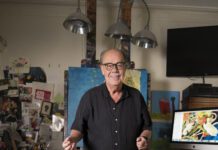








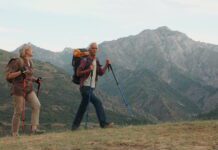
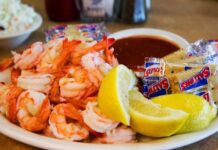



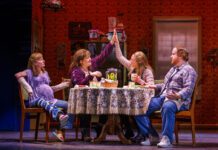


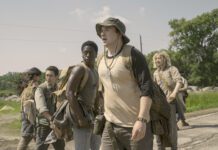



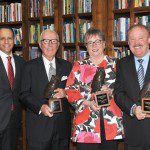

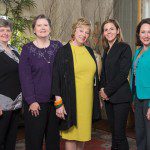

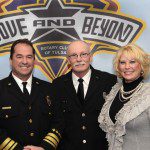
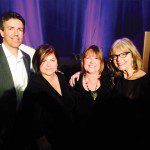



![star-shutterstock_245253610-[Converted]](https://b1523572.smushcdn.com/1523572/wp-content/uploads/2015/03/star-shutterstock_245253610-Converted1.jpg?lossy=1&strip=0&webp=1)
![tree-shutterstock_257176768-[Converted]](https://b1523572.smushcdn.com/1523572/wp-content/uploads/2015/03/tree-shutterstock_257176768-Converted1.jpg?lossy=1&strip=0&webp=1)

